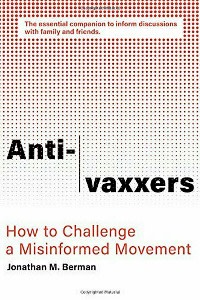Anti-vaxxers: How to Challenge a Misinformed Movement

Roula Khalaf, Editor of the FT, selects her favourite stories in this weekly newsletter.
Opponents of vaccinations have never held so much power. The forces that drive anti-vaxxers — a passion for freedom from government interference, ignorance of science and conspiracies about experts — are flourishing, with far-right demonstrators waving nationalist flags on the streets of Berlin, thousands protesting in London’s Trafalgar Square, and US activists wielding guns to reject lockdowns and masks.
The movement against vaccination has spread from local outbreaks to a global threat to achieving herd immunity. If we develop a successful vaccine against Covid-19, hopes of stopping the loss of lives and jobs could still be scuppered if we cannot convince enough people to get vaccinated.
Pharmaceutical companies are speeding the development of a vaccine, expecting to publish early results from the final stages of their trials throughout this autumn. But far less attention has been given on how to win over the “vaccine hesitant”, a significant chunk of the population who are unsure about inoculations, who risk being converted by the hardcore anti-vaxxers. (A recent survey by the journal Contemporary Pediatrics recorded 25 per cent hesitancy among US parents for regular flu vaccines.)
This issue sits at the heart of Jonathan Berman’s clear and insightful book. Berman, a science professor who helped create the March for Science in 2017, a million-strong demonstration in cities across America, wrote Anti-Vaxxers long before Covid-19 put vaccines on the lips of politicians, economists and the public. As such, while the pandemic is addressed in a short preface, it is an imperfect guide to today’s challenge.
And yet, its arrival is opportune and the deeper questions it explores are informative. His central thesis is that it is the responsibility of all believers in vaccination to convert those who are hesitant, given so many distrust governments, big pharma companies and science.
Even before President Donald Trump suggested administering disinfectant to treat Covid-19, it was clear that no political leader wields the authority in a divided society to unite enough people in favour of vaccination. Nor can we turn to the makers of vaccines — the pharma companies — who are well versed in labs and trials, not cultural movements.
The modern anti-vaccination movement dates back to Andrew Wakefield’s erroneous 1998 journal paper suggesting a link between the measles, mumps and rubella (MMR) vaccine and children developing autism. Berman calls the British former doctor’s work a “complete scientific fraud”, calling into question Wakefield’s motivations and listing studies, including one of over 500,000 children, that show no link to autism.

But fears of vaccination — motivated by similar concerns about preserving bodily autonomy and critiques of authority — have existed since the first vaccines emerged in the late 18th century. Voltaire wrote that the English were “fools and madmen”, not because of their midday sunbathing, but their adoption of vaccination. “Fools, because they give their children the smallpox to prevent their catching it; and madmen, because they wantonly communicate a certain and dreadful distemper to their children, merely to prevent an uncertain evil”. Although it is easier to sympathise with his disgust given a vaccine was a darning needle covered in diseased cows’ pus.
Anti-vaxxers is most practical when Berman lays out the strategies that have failed or worked to win over vaccine critics. He recommends against the “reactive” strategy of challenging a piece of propaganda directly — hitting back online can create a backlash — and even an information-heavy strategy, because these decisions are driven more by gut than brain. Stories about patients suffering from preventable diseases have not worked either, seeming to reduce the chances of Covid-19 disease and deaths changing many minds.
Instead, Berman recommends being careful not to call into question the motivations of the vaccine hesitant — most of whom are committed to being good parents — and finding people before their views are too entrenched.
With a Covid-19 vaccine on the horizon for wide distribution next year, we may sadly already be behind in the race to convince people to take it. In recent months, anti-vaccination propaganda has proliferated online. A US poll in May showed only about half of Americans were committed to taking a vaccine. Berman succeeds in taking a thorough medical history and diagnosing the problem — but he does not offer a convincing cure.
The book is at once timely and not timely enough. For example, it characterises anti-vaxxers as mostly “crunchy” parents, hippies at home with homeopathy. It only briefly mentions a 2018 survey that showed a new correlation between rightwing ideologies and anti-vaccine sentiment on display in recent protests.
Potential opponents of a Covid-19 vaccine stretch from those gun-toting anti-lockdown protesters to Trump critics wary of the president’s involvement in pushing the vaccine developers to move fast with his Operation Warp Speed.
Latest coronavirus news

Follow FT's live coverage and analysis of the global pandemic and the rapidly evolving economic crisis here.
Today’s problem is global — with many European countries and former Soviet states distrustful of vaccines, as well as the US — and yet Berman is right when he says “anti-vaccination activism is a local problem that demands local personal solutions”.
Anti-vaxxers should be a call to arms for each of us to persuade others to take a vaccine, if it is proven safe and effective. Without such a crowdsourced approach, we will not have the time to win people over.
Anti-vaxxers: How to Challenge a Misinformed Movement, by Jonathan Berman, MIT, RRP$19.95/£15.99, 304 pages
Hannah Kuchler is the FT’s US pharma and biotech correspondent
Join our online book group on Facebook at FT Books Café
Comments